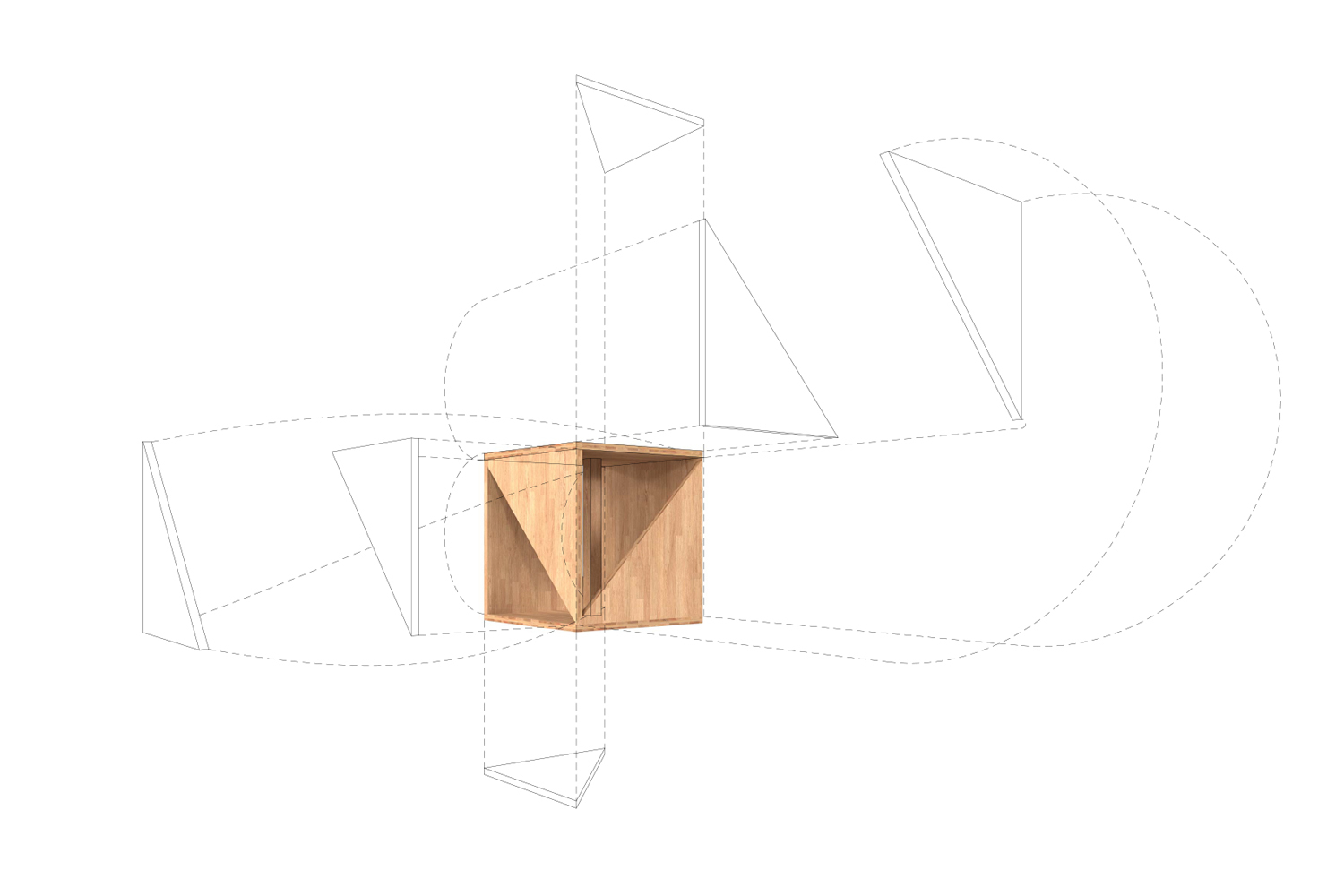Opening reception: April 12 at 6pm SCI-Arc Gallery
Gordon Kipping (M.Arch '95): Maison de Cartes

Wood has emerged as a more sustainable alternative to concrete and steel for the structure of buildings. Wood is renewable and through properly managed reforestation represents an endless resource. Through the process of photosynthesis, trees capture carbon dioxide and release oxygen which operate to counter climate change. While wood eventually needs to be transported and milled, its impacts during the growing and harvesting phase are relatively low compared with concrete and steel which are made from substances that must be mined and heated to extremely high temperatures.
Maison de Cartes, or House of Cards, an exhibition by Gordon Kipping (M.Arch ’95) opening in the SCI-Arc Gallery on April 12, proposes a module of construction for the crisis of our time: climate change. This module of construction is in the spirit of Les Maisons Dom-ino, however, using mass timber as the structure or backbone for the construction. Instead of columns supporting slabs and a stair, Maison de Cartes proposes a stacking of cross-laminated timber walls and floor slabs in combination with glue-laminated columns and beams which support a ramp to ensure universal accessibility.
For the exhibition, a fragment of the Maison de Cartes is constructed in the exhibition space, complete with the expression of fragility and impossible balance. Through the use of an augmented reality application available to your smartphone, the fragment is extended on your screen with wireframe linework to compose the whole. As one moves through the exhibition space with the augmented reality application, real-time/real-space perception of the fragment is augmented with the completion of a representation of the Maison de Cartes.
To demonstrate its mutability, Maison de Cartes is taken through a geometric progression to become the Hocken House, a residential project currently under development by Gordon Kipping Architects in Toronto, Canada. The Maison de Cartes fragment is to have a second life and support another crisis. The mass timber fragment upon disassembly is reassembled into a cube which is redeployed to provide emergency transitional shelter on an encampment site of the unhoused.
Gordon Kipping is a native of Toronto, Canada who has been living and working in New York City since 1995. Upon completing a Bachelor of Applied Science degree in engineering in 1989 at the University of Toronto, Kipping worked as a mechanical engineer in building services, eventually attaining licensure as a Professional Engineer in 1993. In 1991, he returned to school to study architecture at the Southern California Institute of Architecture where he received a Master of Architecture degree in 1995. Kipping has worked for the offices of Philip Johnson, Greg Lynn, I. M. Pei and Davis Brody Bond. Currently, he is an Instructor at the Southern California Institute of Architecture and an Adjunct Associate Professor at the Graduate School of Architecture, Planning and Preservation at Columbia University, a position he has held since 2000. Since 1999, Kipping has been principal of Gordon Kipping Architects, focusing on research and projects for a number of institutions, corporations, government agencies, and private individuals.
Student List of Participation
Olivia Saed-Billingsly
Alina Arustamyan
Gabriela Arevalo
Wang Lezhi
Gabriella Pena
Zhang Yuxi
Ali Alramadhan
Ruiqi Ai
David Aizenman
Elisa Andretta
Miguel Sardinas Castro
Homoud Husain
Harrison Phan
Lakeem Timothy
Ray Vista
Simon (Zihao Xu)
Casper Mads Clausen
Jack Belter
Atharvvivek Bhole
Ben Elmer
Vipasha Thorat
Jimmy Xu
Firdavs Yuldashev
Sophia Soave
Dogukan Altunn
Ella Brindle
Yuan Cao
Ke Chen
Ella Cui
Onurcan Kusken
Yaoyu Lin
Yanxi Lu
Sukanya Mukherjee
Kuber Stark
Chenyu Wang
Mengxi Xu
Yibo Yuan
Xinyu Zhang
Franki LeFebre
Tristan De Anda
Miguel Sardinas Castro







